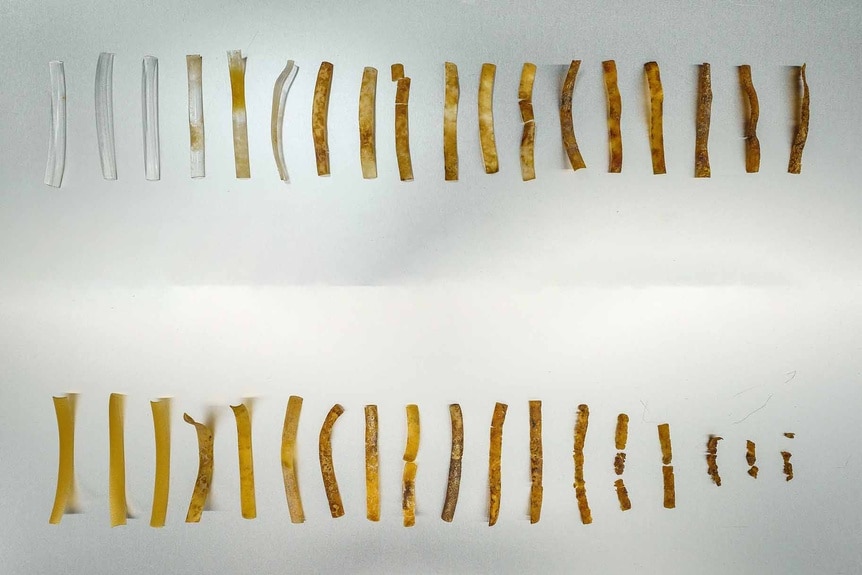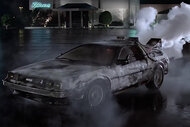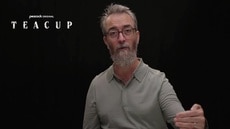Create a free profile to get unlimited access to exclusive videos, sweepstakes, and more!
This Plastic Is Straight Out of a James Bond Movie, It Self-Destructs After Use
Obviously, Q had a hand in all this.
The 2021 spy caper No Time to Die (streaming now on Peacock) was the 25th installment in the James Bond franchise, starring Daniel Craig in the titular role. Like most Bond flicks, this one features a collection of fancy gadgets, courtesy of MI6’s resident techno-wizard, Q.
Over the years, Q has kept Bond and friends stocked with every gadget and gizmo they could ever want, and then some. They’ve had access to a bagpipe flamethrower, submersible cars, knife shoes, and explosive toothpaste, just to name a few. In the 1962 film Dr. No, the first onscreen incarnation of the franchise, Bond receives a set of papers in a “self-destructor bag.”
That idea of covert communications has become a trope of spy stories, with technologies like disappearing ink and messages which self-destruct a few seconds after they’ve been played. Now, researchers at the University of California, San Diego have created a plastic that would make James Bond proud by self-destructing after use.
For More on Bioplastics:
Turning Dead Bugs Into Biodegradable Plastic
Captain Planet Approved! Plant-Based Plastics Rapidly Break Down into Fertilizer
Sweeeeeet….Sustainable Plastics Can Now Be Made from Sugar
Plastic Embedded with Bacterial Spores Consumes Itself After Use
A study recently published in the journal Nature Communications outlines a method by which U.C. San Diego researchers created plastics that eat themselves when we’re done with them. They started with pellets of thermoplastic polyurethane (TPU) and spores from the bacterium Bacillus subtilis. TPU is soft, durable, and commonly used in everything from shoes to mattresses; B. subtilis is a bacterium which is more than happy to gobble up plastic polymers.
“It’s an inherent property of these bacteria. We took a few strains and evaluated their ability to use TPUs as a sole carbon source, then picked the one that grew the best,” said Jon Pokorski, co-lead author of the new study.
Bacterial spores were chosen because they are dormant and resistant to harsh conditions like those experienced during the production of plastics. Once researchers found sufficiently hungry bacteria, they set about breeding them to withstand the high temperatures of plastic production.
“We continually evolved the cells over and over again until we arrived at a strain that is optimized to tolerate the heat. It’s amazing how well this process of bacterial evolution and selection worked for this purpose,” said study co-author Adam Feist.
Plastic pellets and B. subtilis spores were fed into an extruder, melted together, and spit out in thin strips of bacterially impregnated plastic. In laboratory tests, the spores added strength, like rebar supports inside concrete, allowing it to be both stronger and more stretchy. They remain inside the plastic, dormant while the plastic is in use, and wake up only after it's been thrown away. Once the plastic hits the garbage dump, water and nutrients commonly found in compost activate the spores and they get busy eating the plastic.
Over the course of five months exposed to compost conditions, roughly 90% of the plastic had been consumed, while regular TPU in the same conditions had barely broken down at all. Researchers note that B. subtilis is generally regarded as safe to humans and animals, but more research is needed to identify any unknown downstream consequences. Future work will also attempt to expand the technology to other types of plastic.
If these new self-consuming plastics get to market, we’ll be able to toss our garbage with a little less guilt, safe in the knowledge that this water bottle will self-destruct.
In the meantime, catch No Time to Die, streaming now on Peacock.






























